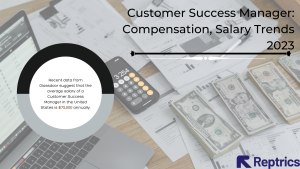The greatest learning is not to force the QBR as a check-the-box meeting. It must add value and focus on the customer’s specific needs.
We can surely imbibe this expert advice on doing the Quarterly Business Reviews the right way. But the choice of QBR might vary depending on the purpose of the meetings and the timeline. QBRs may vary depending on which stage the customer is at and how often should the reviews be conducted. For example, whether you want to conduct Onboarding business reviews or pre/post renewal business reviews is again dependent on business requirements and objectives.
Although there is no one-fit-all QBR for every situation and objective, the primary goal of every Quarterly Business Review is to provide customers with value and help them achieve the best of business outcomes.
Now, if you’re wondering,
What happens in a Quarterly Business Review?
These are highly strategic meetings intended to discuss partnerships between two parties, the sponsor and the business. Businesses often see this as an opportunity to present the intensity of the impact their product has made on their client’s business. It is seen as a valuable chance to position your company’s value to the key stakeholders. The key objective is to put your customer on the focus and communicate where you’re meeting your client’s expectations and finding out room for improvement.
What is the purpose of quarterly business reviews?
Vision alignment and discussion for the upcoming quarter
KPIs cracked and impact of your product on client’s business.
Short-term and long-term priorities of the client.
Where are customers at their success plan? Where are we effective, where were we not?
Identifying and addressing blockers on the feature level and strategy level.
Discovering potential threats- champion leaving org, stakeholder changing, strategic realignment at the customer level
Plus if done correctly, QBRs present an excellent ground to sow seeds for renewals & upsells. However, QBR should be primarily focused on providing customers with value.
Quarterly Business Reviews are often known by the other name as Executive Business Review. This is one reason as why executive sponsor’s involvement is considered crucial from both parties.
Setting your customer success team for the next QBR could be cumbersome, we have got you covered with the basic essentials of doing the business review effectively.
The QBR should be beneficial for the customer. If it isn’t, it shouldn’t be held. If you don’t have enough content for a QBR, reconsider how you want to approach it. It may be best just to hold a cadence meeting with your main contacts.
What should be covered in a QBR?
1. Performance Review for the last quarter
This is one of the main elements to be included in the QBR. Ask yourself the question as, why did the client purchased the product and how far have you been able to fulfill their purpose of buying your product?
Now, present what value you have delivered over the period of time. Including data set is vital to highlight the ROI(Return on investment). The idea is to discuss progress made toward goals. Goals for implementation, product usage or any other actionable goal for which progress needs to be tracked. Track goals that are met, that are on progress and what needs to be achieved.
For example- If your product has helped your client to increase their website traffic, you should be showing them a comparison of the traffic data for the last quarter and compare that to their website’s traffic before you started working together to illustrate how your software has made a measurable difference to their business. The goal is to keep the meeting engaging by showing them valuable results.
2. Goals for the Next Quarter
Discussing goals for the next quarter helps you build trust with your client. See this as an opportunity to get your customers excited about what’s in for them for the future. Make sure, you have time to plan out goals and strategies and how you’re going to drive success for them.
3. Challenges and Opportunities
It is extremely important to understand what obstacles are coming in the way of your customers to meet their unmet goals. Stating a clear and transparent conversation will help you build trust and sure customer success. With that said, opportunities come along the way with challenges.
4. Gather Feedback and Listen to your Client
Make sure you do not make QBR a monologue conversation. QBR can set an opportunity to act as an early-warning system in an account. Allow enough time in the end to discuss the client’s concerns, risks, and challenges they are facing. So that you can have ample time to review the issue before renewal. Ideally, you should not be waiting till the QBRs to address an issue if you see any changes in product usage by tracking customer health score. However, addressing the customer’s problem here would help you tackle the concern before it escalates. Here are a few questions that you must be asking your client to ensure a two-way conversation-
5. Questions to Ask during your Next QBR
How has our product helped you achieve your goals for the past quarter?
What are your next quarter goals with our product?
What recommendations do you suggest for us to make changes in the review to get better results?
How Customer Success Leaders can ensure a successful QBR?
Ensuring a productive QBR is in the hands of the Customer Success Manager. From delegating the meeting to setting the agenda and bringing stakeholders to the QBR, the CSMs need to get themselves involved. One-to-one client QBRs serve as a touchpoint for Customer Success Managers to deliver value and renewal. Here’s a
It could be challenging to introduce QBRs in the Customer Success organization, especially when is it not a part of regular practice. This is a step towards a structured approach to customer success.
Here’s a step-by-step process to set up the QBR agenda-
Plan QBR in advance
Appoint a moderator
Review agenda & confirm objectives
Reviewing product performance for the past quarter
Discussing goals and action items for the next quarter
Schedule the meeting well in advance so that you don’t fall off place. Set a clear timeline, plan, and presentation.
Make sure the key participants receive the agenda well before. So that both parties know what to expect and what to not. You can also invite participants to add feedback on the agenda for better results. This will allow customers to bring up any issue that they may be unaware of.
Demonstrate the value that your customer has achieved through your product through data. After demonstrating value, show them what more they can achieve with your product. Share goals and benchmarks that they can achieve in the future.
Sharing goals let alone will not set transparency. Make sure you show them a detailed action plan to ensure accountability for both parties.
Key Takeways
- QBRs shouldn’t be forced and seen as a check-the box-meeting
- Tracking customer satisfaction post-QBR is important to ensure a healthy customer relationship.
- Set up playbooks to follow up post the meeting to track the progress of QBR.









